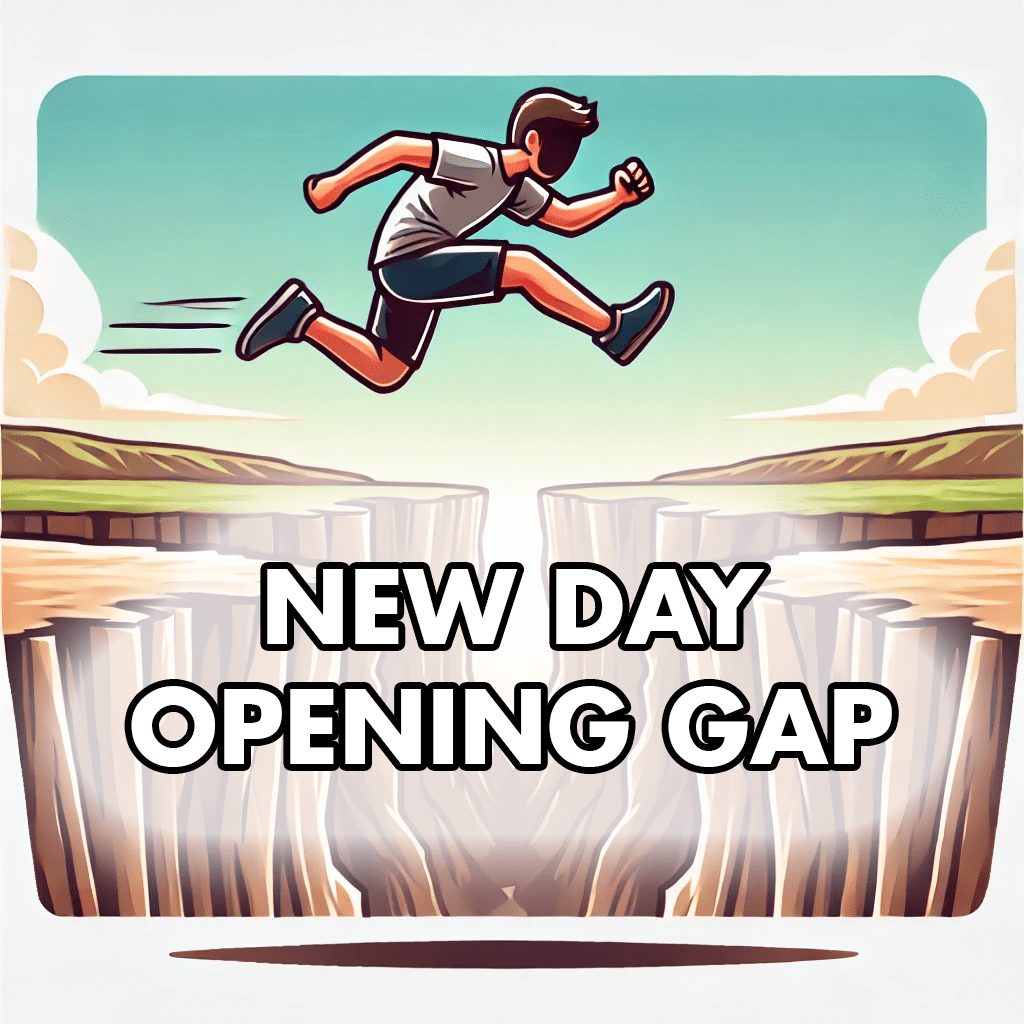New Day Opening Gap: A Guide to Understanding This ICT Concept
Table of Contents
Toggle
Table of Contents
- What Is a New Day Opening Gap?
- Why the New Day Opening Gap Matters in Trading
- How to Identify a New Day Opening Gap
- Using the NDOG in Your Trading Strategy
- Common Mistakes When Trading the NDOG
- Conclusion: Mastering the NDOG
What Is a New Day Opening Gap?
The New Day Opening Gap (NDOG) refers to the price difference between the closing price of the previous trading session and the opening price of the new session. This gap often forms due to overnight market activity, such as news events, institutional positioning, or reduced liquidity during after-hours trading.
In ICT (Inner Circle Trader) Concepts, the NDOG represents a key reference point for understanding how price may behave during the trading day. It is often associated with liquidity voids or areas where the market seeks to rebalance, making it a critical component of precision trading strategies.
To simplify, the NDOG is like a “breadcrumb” left by smart money, revealing where the price might revisit or react during active trading hours.
Why the New Day Opening Gap Matters in Trading
1. Liquidity Magnet
The NDOG acts as a magnet for price. Gaps represent imbalances in supply and demand, and the market naturally gravitates toward filling these voids to restore equilibrium.
2. Key Institutional Levels
Institutions often use NDOGs as entry or exit points for their large trades. Observing how price interacts with these gaps can provide insights into smart money behavior.
3. Context for Trend Continuation or Reversal
A filled gap may signal a continuation of the current trend, while an unfilled gap could indicate strength in the prevailing direction.
Ask Yourself:
Have you noticed how price often revisits these levels even hours after the market opens? That’s not random—it’s the market seeking balance and liquidity.
How to Identify a New Day Opening Gap
Step 1: Mark the Previous Day’s Close
Locate the closing price of the prior session. This level acts as the starting reference point for the gap.
Step 2: Mark the Current Day’s Open
Identify the opening price of the new session. This will help you measure the size and direction of the gap.
Step 3: Measure the Gap
- Bullish NDOG: When the opening price is higher than the previous close.
- Bearish NDOG: When the opening price is lower than the previous close.
Step 4: Identify Gap Filling Potential
Observe whether the gap is being targeted by price action early in the session or if it remains unfilled, signaling a potential continuation.
Using the NDOG in Your Trading Strategy
1. Trading Gap Fills
Price often seeks to fill gaps during the trading session. This creates opportunities to trade the retracement to the NDOG.
Example:
- A bullish NDOG might see price retrace downward to fill the gap before resuming an upward trend.
- Conversely, a bearish NDOG may see price retrace upward to fill the gap before continuing downward.
2. Combining NDOG with Liquidity Zones
Gaps often align with liquidity pools. For example, a gap near a significant support or resistance level can act as a high-probability trade setup.
3. Timing with ICT Killzones
The NDOG becomes even more powerful when paired with ICT killzones, such as:
- London Open (2:00 AM – 5:00 AM EST): Often aligns with early session moves.
- New York Open (8:00 AM – 11:00 AM EST): Provides high-volatility setups as liquidity increases.
4. Confirmation from Market Structure
A break of structure near the NDOG can validate your directional bias. For instance:
- A break of a key high during a bullish NDOG suggests continued upward movement.
- A break of a key low during a bearish NDOG signals further downward momentum.
Common Mistakes When Trading the NDOG
1. Ignoring Higher Timeframe Context
NDOGs on lower timeframes may create noise. Always align them with higher timeframe trends for clarity.
2. Overtrading Gaps
Not all gaps are tradable. Focus on NDOGs that align with significant levels, liquidity pools or institutional footprints.
3. Poor Risk Management
Even the best setups can fail. Use tight stop-losses just beyond the gap to minimize risk.
4. Trading Without Confirmation
Entering a trade solely because of a gap is risky. Wait for confirmation, such as a liquidity sweep or break of structure.
Conclusion: Mastering the NDOG
The New Day Opening Gap (NDOG) is more than just a visual price difference—it’s a tool that reveals institutional intent and highlights areas of market imbalance. By understanding how NDOGs form and integrating them into your trading strategy, you can improve your ability to anticipate market movements and align with smart money flows.
Practice marking NDOGs on your charts, and observe how price interacts with these levels. When paired with ICT concepts like liquidity pools, killzones, and market structure, the NDOG becomes an indispensable part of your trading arsenal.
Private Coaching
If you’re ready to take your trading skills to the next level and really want to answer the question “is ICT worth it”, book your free discovery session with me today! We’ll discuss your goals, assess your current trading strategy, and create a personalized plan to align you with the edge of trading like smart money.
